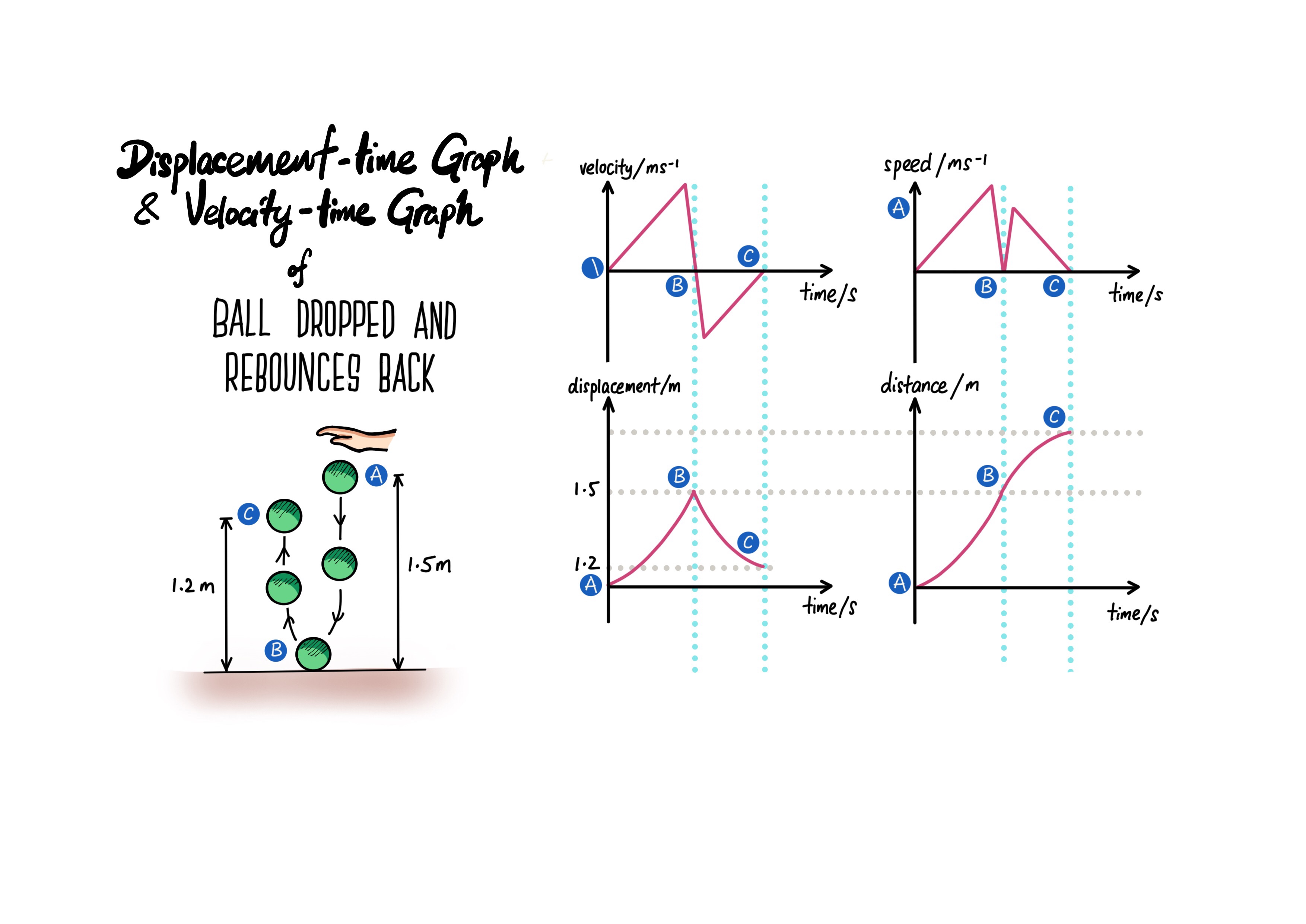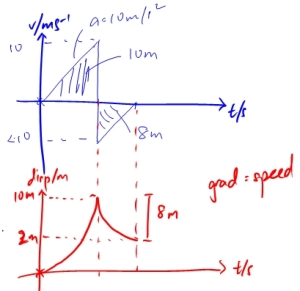A 10 kg box is initially at rest on a rough horizontal surface and a horizontal force is then applied to it. The force varies as shown in the diagram.

a) If the box moves with an acceleration of 2m/s2 in the first 15 s, what is the frictional force between the surfaces?

Resultant force on box = ma
Applied force – frictional force = ma
40 – frictional force = 10 x 2
frictional force = 20 N
b) How does the velocity change during the next 5 s?

Next 5 s after time 15 s, there is no applied force. Hence the resultant force acting on box isonly frictional force 20N (in direction opposite to motion of box).
F = ma
-20 = 10 x a
a = – 2 m/s2
The velocity of box at time 15s is required.
Hence when t = 0s, box accelerates at 2m/s2 from rest,
a = (v – u) / t
2 = (v – 0) /15
v = 30 m/s
(Hence the final velocity of the box at time 15s is 30 m/s, just before applied force of 40 N is released)
Find velocity of box at end of next 5s (time = 20s):
a = (v – u) /t
– 2 = (v – 30) / 5
v = 20 m/s.
Therefore, velocity decreases at a constant rate of -2 m/s2 from 30 m/s to 20 m/s in next 5s.
c) Plot a velocity-time graph and calculate the distance travelled by the box in the 30 s.










 Click here to refer to the post related to this motion.
Click here to refer to the post related to this motion.











